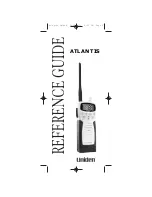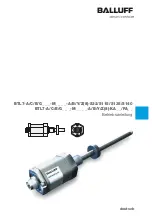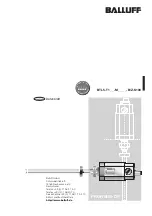
11
Alignment
Introduction
The
VXA-700
is carefully aligned at the factory for the
specified performance across the Aircraft and Amateur
bands. Realignment should therefore not be necessary
except in the event of a component failure.
The following procedures cover the adjustments that are
not normally required once the transceiver has left the
factory. However, if damage occurs and some parts sub-
sequently are replaced, realignment may be required. If a
sudden problem occurs during normal operation, it is like-
ly due to component failure; realignment should not be
done until after the faulty component has been replaced.
We recommend that servicing be performed only by au-
thorized Vertex Standard service technicians who are ex-
perienced with the circuitry and fully equipped for repair
and alignment. If a fault is suspected, contact the dealer
from whom the transceiver was purchased for instructions
regarding repair. Under no circumstances should any
alignment be attempted unless the normal function and
operation of the transceiver are clearly understood, the
cause of the malfunction has been clearly pinpointed and
any faulty components replaced, and realignment deter-
mined to be absolutely necessary. Problems caused by
unauthorized attempts at realignment are not covered by
the warranty policy
Vertex Standard reserves the right to change circuits and
alignment procedures, in the interest of improved perfor-
mance, without notifying owners.
The following test equipment (and familiarity with its use)
is necessary for complete realignment. While most steps
do not require all of the equipment listed, the interactions
of some adjustments may require that more complex ad-
justments be performed afterwards. Do not attempt to
perform only a signal step unless it is clearly isolated elec-
trically from all other steps. Have all test equipment ready
before beginning, and follow all of the steps in a section
in the order presented.
Correction of problems caused by misalignment result-
ing from use of improper test equipment is not covered
under the warranty policy.
Required Test Equipment
¦
Radio Tester with calibrated output level at 200 MHz
¦
In-line Wattmeter with 5% accuracy at 200 MHz
¦
50-
W
, 10-W RF Dummy Load
¦
Regulated DC Power Supply adjustable from 3 to 15
VDC, 2A
¦
Frequency Counter: ±0.2 ppm accuracy at 200 MHz
¦
AF Signal Generator
¦
AC Voltmeter
¦
DC Voltmeter: high impedance
¦
VHF Sampling Coupler
Alignment Preparation & Precautions
A 50-
W
RF load and in-line wattmeter must be connected
to the main antenna jack in all procedures that call for
transmission, except where specified otherwise. Correct
alignment is not possible with an antenna. After complet-
ing one step, read the next step to see if the same test equip-
ment is required. If not, remove the test equipment (ex-
cept dummy load and wattmeter, if connected) before
proceeding.
Correct alignment requires that the ambient temperature
be the same as that of the transceiver and test equipment,
and that this temperature be held constant between 68 ~
86 °F (20 ~ 30 °C) . When the transceiver is brought into
the shop from hot or cold air, it should be allowed some
time to come to room temperature before alignment.
Whenever possible, alignments should be made with os-
cillator shields and circuit boards firmly affixed in place.
Also, the test equipment must be thoroughly warmed up
before beginning.
Set up the test equipment as shown below for transceiver
alignment, apply 7.4 VDC power to the transceiver.
Notes
: signal levels in dB referred to in alignment are based
on 0 dBµ = 0.5 µV (closed circuit).
Test Equipment Setup
Summary of Contents for Spirit VXA-700
Page 4: ...4 Note ...
Page 5: ...5 Block Diagram ...
Page 6: ...6 Connection Diagram ...
Page 10: ...10 Note ...
Page 32: ...32 AF Unit Note ...












































